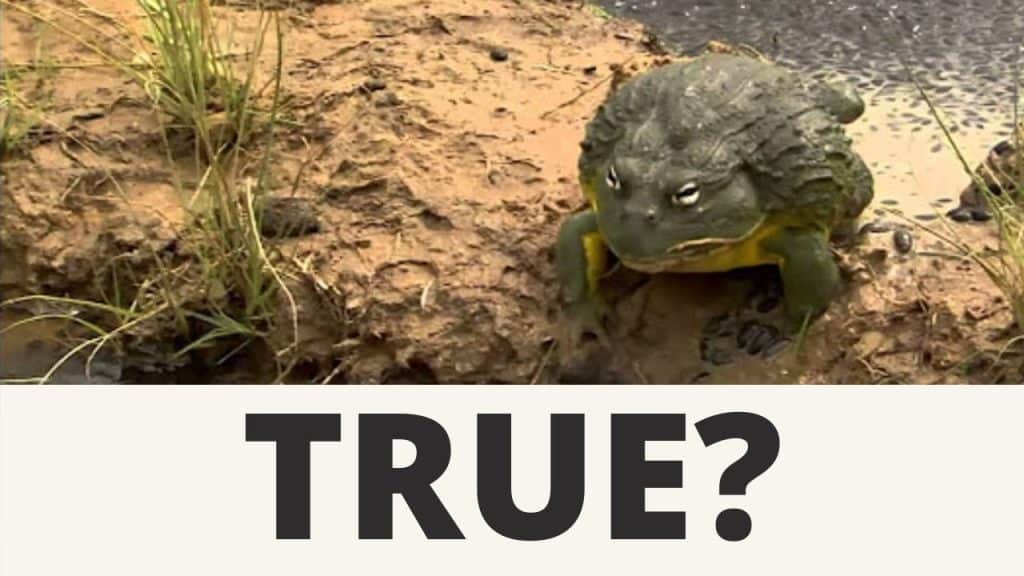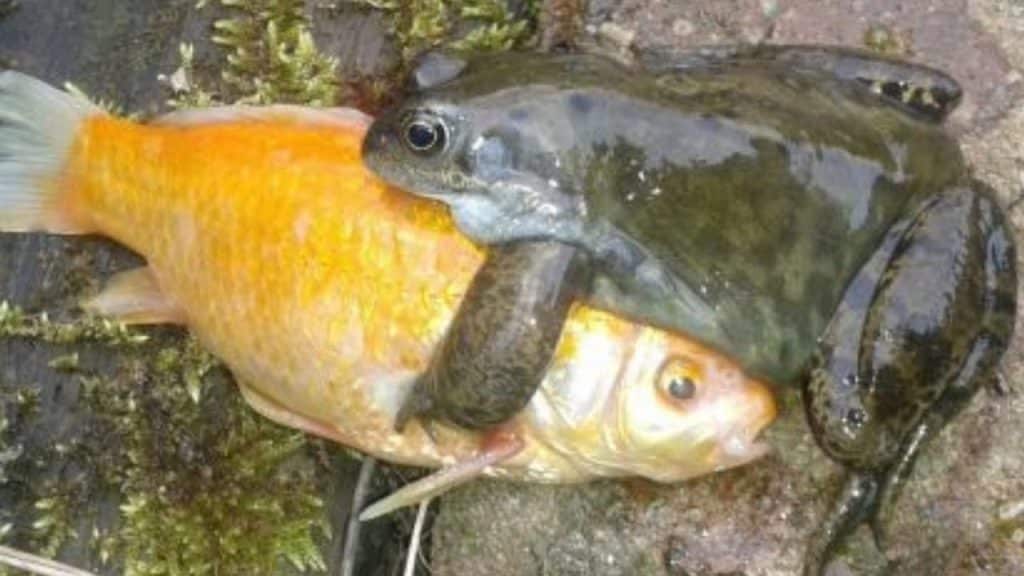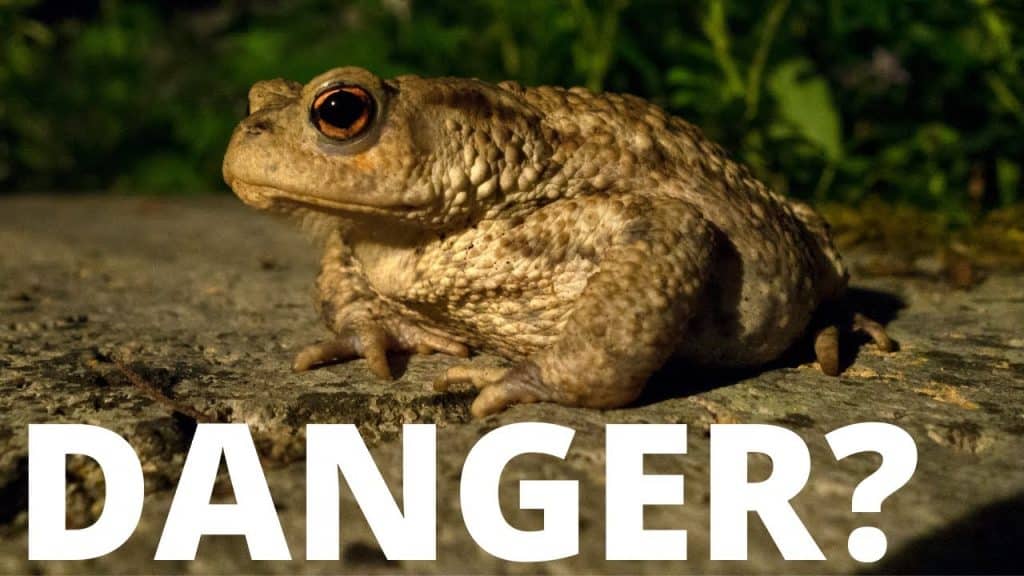Welcome to “Where Frogs Live: The Ideal Frog Habitat,” a video by Toads N Frogs that explores the habitats where most frogs reside. With over 7,400 known frog species worldwide, it can be a complex and confusing topic. In this video, we will delve into the three main requirements of a frog’s habitat: access to fresh water, an abundance of food, and a safe place for reproduction. Frogs are diverse creatures that come in different varieties and inhabit various environments. They rely on water for hydration and oxygenation, so they typically live in fresh water to avoid dehydration. Additionally, we will discuss their diet and the need for a balanced and diverse food source. Furthermore, we will explore the importance of a safe environment for frogs to lay their eggs and raise their tadpoles, as they face numerous predators. Whether it’s large or small freshwater lakes, ponds, streams, or marshes, we will uncover the hidden habitats of these fascinating amphibians. Join us in discovering the ideal frog habitat and learn more about these amazing creatures that can bring immense benefits to our backyard or garden spaces in controlling pests and mice.

Basic Needs of Frogs
Freshwater Availability
Frogs require access to freshwater in order to meet their basic needs. They rely on water for hydration and respiration, as they are able to absorb oxygen through their skin. If frogs were to live in saltwater environments, they would risk becoming dehydrated or getting sick. Therefore, most frog species are found in freshwater habitats. It is important that the water they inhabit is not polluted by man-made chemicals or garbage, as this can be detrimental to their health and survival.
Dietary Requirements
As carnivorous animals, frogs have specific dietary requirements. They are capable of consuming a wide range of prey, including insects, spiders, worms, small mice, and even other frogs. It is important for frogs to have access to a diverse diet in order to maintain a healthy and balanced nutrition. Similar to humans, frogs need a variety of food sources to ensure they receive all the necessary nutrients. Understanding what frogs eat is crucial in providing them with a suitable habitat.
Reproductive Safety
Reproduction is a crucial aspect of a frog’s life cycle. Frogs lay their eggs in water, and therefore, they require a safe and suitable environment for breeding. It is important for the habitat to have minimal predators that would devour the frog eggs or tadpoles. Due to the large number of predators that prey on frogs, finding a safe place to breed and live is essential for their survival and the sustainability of their population.
Water as a Crucial Habitat Component
Importance for Hydration and Oxygenation
Water is essential for frogs as it provides hydration and oxygenation. Frogs often spend long periods of time sitting in water to stay hydrated and replenish their oxygen levels. As they absorb oxygen through their skin, it is crucial for them to have access to freshwater habitats. Without an adequate supply of fresh water, frogs would struggle to survive and maintain their overall health and well-being.
Freshwater vs. Saltwater Environments
Frogs primarily inhabit freshwater environments rather than saltwater environments. This is because their unique respiratory system is not equipped to handle the high salt concentrations found in saltwater. By residing in freshwater habitats, frogs can avoid the risk of dehydration and illness. Additionally, freshwater habitats provide frogs with a greater abundance of prey and vegetation, which are essential for their survival.
Impact of Pollution on Water Habitats
Pollution poses a significant threat to frog habitats. Man-made chemicals and garbage can contaminate freshwater environments, resulting in adverse effects on frogs and their ecosystems. Pollution can disrupt the natural balance of the habitat, leading to a decline in frog populations. It is crucial to prioritize the conservation and protection of freshwater habitats to ensure the well-being of frogs and the preservation of their species.
Frog Diets and Foraging Areas
Carnivorous Nature of Frogs
Frogs are carnivorous creatures, meaning their diet consists primarily of meat. Their diet includes a wide range of prey, such as insects, spiders, worms, small mice, and other frogs. This carnivorous nature is essential for the frogs’ survival and overall health. Their ability to consume various prey allows them to obtain the necessary nutrients and energy needed to thrive.
Range of Prey Consumed
Frogs are opportunistic feeders and can consume a diverse range of prey. Their diet includes insects like flies, beetles, and moths, as well as spiders, earthworms, and small vertebrates. Some larger species of frogs are even capable of hunting and consuming small mice and other frogs. This ability to adapt their diet to the available prey ensures that frogs can survive in different habitats and ecological conditions.
Diversity of Diet for Health
Maintaining a diverse diet is crucial for the overall health of frogs. Just like humans, frogs require a balanced and varied diet to obtain all the necessary nutrients for their growth and well-being. A diet that includes a variety of prey allows frogs to obtain a wider range of vitamins, minerals, and proteins, which are essential for their growth, reproduction, and immune function.
Habitats that Support Food Abundance
Frogs thrive in habitats that offer an abundance of food sources. Wetland areas, such as marshes, swamps, and ponds, often provide a rich variety of insects, spiders, and other small invertebrates that serve as prey for frogs. These habitats also offer ample vegetation, which attracts a greater number of insects and provides hiding places for frogs. Additionally, areas with a lower number of predators, such as fish, allow frogs to feed more freely and safely.
Safety and Shelter in Frog Habitats
Shelter for Protection from Predators
Frogs require suitable shelter to protect themselves from predators. Vegetation, rocks, logs, and other natural features provide hiding spots and refuge for frogs. These sheltered areas are important for their survival and allow frogs to evade detection and avoid becoming prey. Access to safe and secure shelter in their habitats increases the chances of frogs successfully avoiding predators and ultimately ensures their long-term survival.
Safe Breeding Sites
In addition to shelter for protection, frogs need safe breeding sites to ensure the survival of their offspring. These sites should be free from predators that pose a threat to frog eggs and tadpoles. Bodies of water, such as ponds, lakes, and marshes, provide suitable environments for frogs to lay their eggs. Protected areas within the water bodies, such as hidden vegetation or shallow pools, offer protection and increase the chances of successful reproduction.
Predation Pressures on Frog Populations
Frogs face numerous predation pressures that threaten their populations. They have a wide range of natural predators, including birds, snakes, fish, and mammals. Predation can have a significant impact on frog populations, especially if predation rates outweigh reproduction rates. Managing and conserving frog habitats is crucial to ensure the availability of safe areas and reduce predation pressures on frog populations.
Lakes: Ideal Habitats for Frogs
Characteristics of Frog-friendly Lakes
Lakes serve as ideal habitats for many frog species. Frog-friendly lakes typically have a combination of favorable characteristics, including abundant freshwater, a variety of vegetation, and minimal pollution. These lakes should also offer suitable shelter and breeding sites for frogs. A healthy lake ecosystem ensures the availability of prey and resources necessary for frogs to survive and thrive.
Vegetation as Hiding Spots
Vegetation plays a vital role in lakes as hiding spots for frogs. Lily pads, aquatic plants, and reeds provide cover and protection for frogs from predators. Vegetation also serves as a food source for some frog species, as it attracts insects and other small invertebrates. The presence of abundant vegetation in lakes not only supports the frog populations but also contributes to the overall health of the ecosystem.
Presence in North American Great Lakes
Many species of frogs can be found in the North American Great Lakes region. These large freshwater lakes provide suitable habitats for various frog species due to their size and ecological diversity. From the smaller inland lakes to the vast expanses of the Great Lakes, frogs can find the necessary resources and conditions to survive. The abundance of vegetation, freshwater, and prey in these lakes supports a thriving frog population.
Ponds: Natural and Man-Made
Benefits of Natural Ponds
Natural ponds offer numerous benefits for frog populations. Ponds often have a stable water supply, which is important for frogs that require freshwater habitats. They also tend to have a diverse range of vegetation and invertebrates, providing a suitable habitat and a readily available food source for frogs. Natural ponds can support a healthy and sustainable frog population when they possess the necessary resources and minimal predation pressure.
Creating a Frog-friendly Pond
Man-made ponds can be designed to be frog-friendly habitats. To create a frog-friendly pond, certain elements should be considered. Providing a shallow area with gentle slopes allows frogs easy access to the water. Adding vegetation, such as water lilies and floating plants, offers hiding spots and perches for frogs. Avoiding the introduction of predatory fish and regularly maintaining the water quality are also crucial to ensure a suitable environment for frogs to thrive.
Importance of Shaded Areas and Plant Life
Shaded areas and plant life are essential components of frog-friendly ponds. Shaded areas provide protection from direct sunlight and help maintain suitable temperature conditions for frogs. Plant life, such as aquatic plants and emergent vegetation, not only provides hiding spots for frogs but also contributes to water quality by absorbing excess nutrients and preventing algal blooms. Creating a well-balanced ecosystem within a pond is vital to support a healthy frog population.
Streams and Their Appeal
Creeks and Streams as Habitats
Creeks and streams offer a unique appeal as habitats for frogs. These flowing water bodies often provide a steady supply of freshwater and serve as natural corridors for frog movement between different habitats. Streams offer suitable conditions for a variety of frog species, especially those that thrive in shallow pools and areas with low current. They also serve as feeding grounds for frogs, as they attract a diverse range of insects and invertebrates.
Need for Shaded Regions
Shaded regions are crucial for frogs in creek and stream habitats. Tree canopies and overhanging vegetation provide shade, keeping the water cool and preventing temperature extremes. This is especially important during hot weather when maintaining suitable water temperatures is essential for the survival of frogs. Shaded regions also offer protection from predators and allow frogs to rest and avoid excessive energy expenditure.
Avoidance of Fast Moving or Deep Rivers
Frogs tend to avoid fast-moving or deep rivers as these conditions are often unsuitable for their survival. Fast-moving rivers have high water currents that make it difficult for frogs to maintain their position and navigate. Deep rivers may lack suitable vegetation and shallower areas necessary for breeding and resting. Frogs prefer slow-moving or still water bodies, such as ponds or calm sections of creeks and streams, where they can thrive.
Marshes, Swamps, and Bogs
Vital Wetland Habitats
Marshes, swamps, and bogs are vital wetland habitats that support diverse ecosystems, including frog populations. These habitats are characterized by a combination of water, vegetation, and moist soil conditions. Their unique ecological features provide ideal conditions for various frog species to thrive. Marshes typically consist of grassy wetlands, while swamps are bodies of water surrounded by trees. Bogs are characterized by acidic and nutrient-poor conditions.
Differences Between Marshes and Swamps
While both marshes and swamps are wetland habitats, they differ in their vegetative composition and water flow. Marshes tend to have a higher abundance of grasses and herbaceous plants, while swamps are dominated by trees. Marshes are often characterized by the presence of emergent vegetation and shallow water, while swamps have deeper water and larger trees. Both habitats provide suitable conditions for frogs, although specific frog species may prefer one over the other.
Availability of Water, Vegetation, and Prey
Marshes, swamps, and bogs offer an abundance of water, vegetation, and prey, making them ideal habitats for frogs. Water provides frogs with hydration and reproduction sites, while vegetation offers shelter, hiding spots, and a source of food. These wetland habitats support a wide range of invertebrates, such as insects and worms, which serve as prey for frogs. The availability of these resources contributes to the overall health and sustainability of frog populations in these habitats.
Land Proximity and Terrestrial Frogs
Land-dwelling Frogs vs. Toads
While most frogs require close proximity to water bodies, certain species of frogs are adapted to live primarily on land. These terrestrial frogs have specialized traits that allow them to survive without constant access to water. In contrast, toads are a separate group of amphibians that are well-adapted to terrestrial life. Toads generally have drier skin and live farther away from water bodies compared to frogs.
Proximity to Water Sources
Even though some frog species can inhabit land, they still require proximity to water sources for breeding and survival. These frogs inhabit environments near water bodies, such as forests, meadows, or grasslands, to ensure easy access to suitable breeding sites. They may rely on temporary or seasonal water bodies, such as puddles or small streams, for reproduction, while spending the majority of their lives on land.
Habitats for Terrestrial Species
Terrestrial frog species can be found in a variety of habitats that provide suitable conditions for their survival. Forested areas, including both temperate and tropical forests, often support a diverse range of amphibians, including terrestrial frogs. Grasslands and meadows can also provide suitable habitats for these frogs, as long as there are nearby water bodies for breeding. Terrestrial frog species have adapted their lifestyles to optimize their survival on land while still relying on water for reproduction.
Conclusion
Understanding the ideal habitats for frogs is essential for their conservation and the preservation of their species. Frogs have basic needs that include access to freshwater, a diverse diet, and suitable breeding sites. Water serves as a crucial component of their habitats, providing hydration, oxygenation, and opportunities for reproduction. Frogs thrive in environments with abundant vegetation, minimal pollution, and few predators.
Lakes, ponds, creeks, streams, marshes, swamps, and bogs all offer favorable habitats for frogs, as they provide the necessary resources for their survival. These wetland areas support an abundance of water, vegetation, and prey, creating ideal conditions for various frog species. Additionally, terrestrial frogs have adapted to live primarily on land but still require proximity to water sources for breeding.
Conservation efforts focused on preserving and restoring frog habitats are crucial for maintaining healthy frog populations and biodiversity. These efforts include protecting freshwater sources, reducing pollution, preserving wetland areas, and creating frog-friendly habitats. By understanding the specific needs of frogs and implementing practices that support their habitats, we can ensure the long-term survival and well-being of these unique and important creatures.



